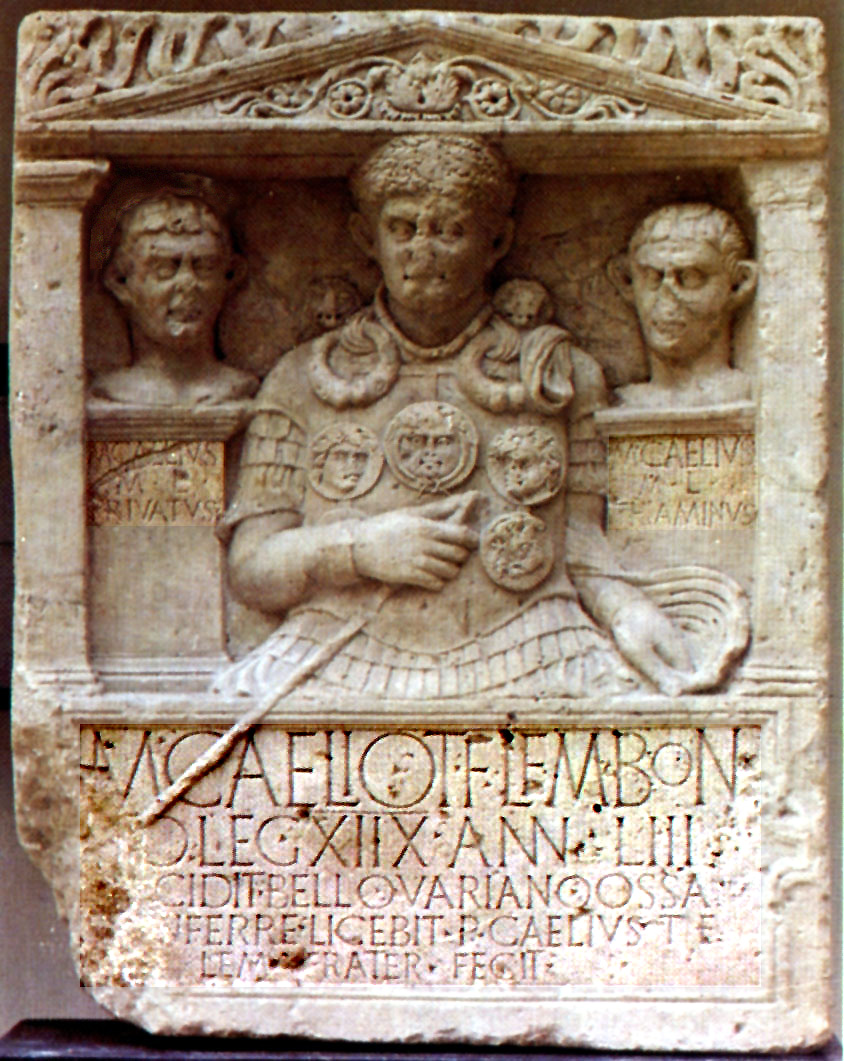Tombstone of Marcus Caelius
Testament to the Freedom of the Germanic People

This monument is the main stone document of the struggle of the Germanic people against its most powerful oppressor of early times: the Roman Empire. It is the gravestone of Marcus Caelius, a centurion (captain) of the Roman legions led by Quinctilius Varus through the Teutoburg Defile (Saltus Teutoburgiensis) of northern Germany, where they were annihilated by the great Cheruskan leader Sigiwarðus, known ever after in song, epic and myth as Sigurd or Siegfried, and whose Latin name was Arminius. Originally the above tombstone probably stood on the so-called Fürstenberg (“Prince Mountain”) opposite the mouth of the Lippe river in the vicinity of the modern German city of Xanten, site of the ancient Colonia Ulpia Trajana. In Roman times this was also the location of the Castra Vetera, a large military fort. In the Middle Ages the tombstone was incorporated into the wall of a monastery on the Fürstenberg, and later still was taken to the German town of Kleve on the Dutch border. Subsequently the Dutch field marshal, Prince Johan Maurits (German: Johann Moritz) of Nassau-Siegen (1604 Jun. 17, Dillenburg, Germany — 1679 Dec. 20, at Bergendaal/Berg und Tal near Kleve), who was Statthalter — i.e., governor — (from 1647) of Kleve, Mark and Ravensberg in Germany and (from 1658) Minden in the Netherlands for the Prince Elector (Kurfürst) of the German state of Mark Brandenburg, took it for use in his own grave monument. Today the original is in Bonn, Germany. In 2002 a cast of the tombstone was placed in the foyer of University of the Saarland’s Building 10, where the Institute for Ancient History is located. The relief shows Marcus Caelius with all of his military decorations and emblems of rank. Over his upper-body armor, round medals (phalerae) hang on a harness of leather straps. On both wrists he wears bracelets (armillae) and on his shoulders twisted wreaths (torquēs) — all comparable to our modern military insignia. In his right hand he holds a baton (vītis) — a centurion's staff made of grapevine wood. This not only served as a symbol, but was much feared by the enlisted ranks as a stick used to beat discipline into them. Depicted to his right and left are two freedmen (i.e., former slaves), Privatus and Thiaminus, who, according to the inscription, also had the right of being buried in the same spot. |
->> >> >>⇈⇑⇈<< << <<-
| Deus vult ! | — Þeedrich ( Inscriptio electronica : Theedrich@harbornet.com ) |
| Dies immutationis recentissimæ : die Veneris, 2015 Mar 20 |